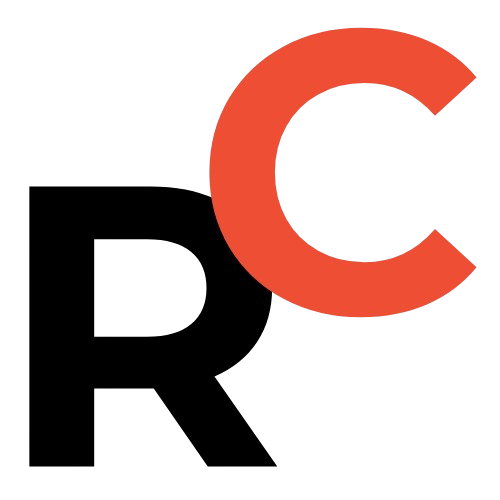Hong Kong IPOs — Two leading autonomous‑driving firms filed CSRC notices for Hong Kong listings on the same day.
Key Points
- Simultaneous CSRC filings: WeRide (Wényuǎn Zhīxíng 文远知行) and Pony.ai (Xiǎomǎ Zhìxíng 小马智行) filed Hong Kong IPO notices on the same day, each proposing roughly ~102.4 million ordinary shares; companies must report listing results within 15 working days and refresh filings if not completed within 12 months.
- WeRide Q2 traction: Total revenue of ¥127,000,000 with Robotaxi revenue ¥45,900,000 (up 836.7% YoY) accounting for 36.1% of Q2 revenue, alongside international permits/tests in Singapore, Belgium and driverless permission in Shanghai (Pudong).
- Pony.ai scale and runway: Q2 revenue of ¥154,000,000 (up 75.9% YoY), a Robotaxi fleet of over 500 vehicles with a target to exceed 1,000 vehicles by year‑end, and cash & investments of ¥5,356,000,000 to support expansion.
- Industry economics & market size: Operators target a breakeven inflection near ~1,000 vehicles in first‑tier cities; cited market estimates show global autonomous‑driving growth from $158.3B (2023) to $273.8B (2025).
- Simultaneous CSRC filings: WeRide (Wényuǎn Zhīxíng 文远知行) and Pony.ai (Xiǎomǎ Zhìxíng 小马智行) filed Hong Kong IPO notices on the same day, each proposing roughly ~102.4 million ordinary shares; companies must report listing results within 15 working days and refresh filings if not completed within 12 months.
- WeRide Q2 traction: Total revenue of ¥127,000,000 with Robotaxi revenue ¥45,900,000 (up 836.7% YoY) accounting for 36.1% of Q2 revenue, alongside international permits/tests in Singapore, Belgium and driverless permission in Shanghai (Pudong).
- Pony.ai scale and runway: Q2 revenue of ¥154,000,000 (up 75.9% YoY), a Robotaxi fleet of over 500 vehicles with a target to exceed 1,000 vehicles by year‑end, and cash & investments of ¥5,356,000,000 to support expansion.
- Industry economics & market size: Operators target a breakeven inflection near ~1,000 vehicles in first‑tier cities; cited market estimates show global autonomous‑driving growth from $158.3B (2023) to $273.8B (2025).

Quick take:
WeRide (Wényuǎn Zhīxíng 文远知行) and Pony.ai (Xiǎomǎ Zhìxíng 小马智行) submitted CSRC filing notifications on October 14, 2025, signaling parallel moves toward Hong Kong listings.
This article breaks down the filings, the Q2 financials each company disclosed, the regulatory timing to watch, and the commercialization context for autonomous driving in China and abroad.
Summary of CSRC Filings — Hong Kong IPOs and share counts
On October 14, 2025, the China Securities Regulatory Commission (CSRC) published filing notices for two autonomous‑driving companies pursuing Hong Kong listings.
Both notices propose roughly the same number of ordinary shares to be issued in the Hong Kong IPOs.
- WeRide Inc. (Wényuǎn Zhīxíng 文远知行) — proposed maximum: 102,428,200 ordinary shares.
- Pony.ai Inc. (Xiǎomǎ Zhìxíng 小马智行) — proposed maximum: 102,146,500 ordinary shares.
The CSRC requires each company to report the results of their overseas offering and listing within 15 working days via the CSRC filing system.
If a company does not complete the overseas listing within 12 months of the notice date but intends to proceed, it must refresh and update its filing materials.

Resume Captain
Your AI Career Toolkit:
- AI Resume Optimization
- Custom Cover Letters
- LinkedIn Profile Boost
- Interview Question Prep
- Salary Negotiation Agent

WeRide (Wényuǎn Zhīxíng 文远知行) — Q2 growth, global tests, and commercial push
Who they are:
Founded in 2017, WeRide provides autonomous mobility solutions and has been expanding internationally while maintaining R&D and operations across multiple jurisdictions.
WeRide completed a U.S. listing on the Nasdaq (Nà sī dá kè 纳斯达克) in October 2024 and entered the Nasdaq China Golden Dragon Index in September 2025.
Operational footprint and partnerships
- Global footprint: Autonomous‑driving licenses in seven countries, and R&D, testing, and operations in more than 30 cities across 11 countries.
- Recent deployments: First batch of Robotaxi GXR units sent to Singapore for testing.
- Regulatory approvals: Permission to run driverless on public roads (with oversight) in Shanghai’s Pudong New Area via partnership with Chery (Chēqì 汽车) and Jinjiang Taxi.
- Robobus: Autonomous minibus secured a Belgium federal L4 testing permit.
- Commercial collaboration: Partnership with Grab on consumer autonomous services in Singapore (Ai.R project).
Q2 2025 financial highlights (WeRide)
- Revenue: ¥127,000,000 RMB ($17.74 million USD).
- Robotaxi revenue: ¥45,900,000 RMB ($6.41 million USD) — year‑over‑year growth of 836.7%, a single‑quarter record for the company.
- Robotaxi revenue share: 36.1% of total Q2 revenue — highest single‑quarter share since 2021.
- Gross profit y/y growth: 40.6%.
Why that matters:
The surge in Robotaxi revenue indicates WeRide is moving beyond pilots and into monetized services.
Robotaxi contributions reaching over a third of quarterly revenue is a strong sign of commercial traction compared with prior years.
International testing permits and the Singapore and Belgium activities show a deliberate strategy of regulatory‑driven expansion.

Pony.ai (Xiǎomǎ Zhìxíng 小马智行) — Scaling fleets, revenue growth, and cash runway
Pony.ai listed on the Nasdaq (Nà sī dá kè 纳斯达克) in November 2024 and was included in the Nasdaq China Golden Dragon Index earlier in 2025.
The company is focused on commercializing Robotaxi services and scaling vehicle fleets across first‑tier Chinese cities and pilot markets overseas.
Q2 2025 financial highlights (Pony.ai)
- Total revenue: ¥154,000,000 RMB ($21.51 million USD), up 75.9% year‑over‑year and up 53.5% quarter‑over‑quarter.
- Robotaxi fleet: Over 500 vehicles in operation by the end of Q2 2025, with a target of exceeding 1,000 vehicles by year‑end.
- Robotaxi business revenue: ¥10,900,000 RMB ($1.52 million USD), up 157.8% year‑over‑year.
- Passenger fares: Grew more than 300% year‑over‑year due to geographic expansion and higher demand in first‑tier cities.
- Cash, cash equivalents and investments: ¥5,356,000,000 RMB ($748.32 million USD).
International moves:
- Partnership and cooperation with Qatar’s national transport operator Mowasalat.
- Plans with Singapore operator ComfortDelGro for services and programs.
- Road‑testing permission in Dubai to expand Middle East presence.
Why that matters:
Pony.ai’s accelerating top line and fleet growth show a scaling playbook: grow vehicle count, increase utilization, and push passenger fares as service availability spreads into higher‑demand urban areas.
The company’s cash and financial investments provide runway to expand fleets and push for the 1,000‑vehicle breakeven threshold noted across industry participants.

Find Top Talent on China's Leading Networks
- Post Across China's Job Sites from $299 / role, or
- Hire Our Recruiting Pros from $799 / role
- Qualified Candidate Bundles
- Lower Hiring Costs by 80%+
- Expert Team Since 2014
Your First Job Post

What the Filings Mean — Timing and Compliance
The CSRC filing notice is a regulatory step enabling overseas offering workstreams to proceed under specific reporting requirements.
- After an overseas listing, companies must report the listing outcome to the CSRC within 15 working days through the CSRC filing management system.
- If a company cannot complete the overseas issuance and listing within 12 months, it must refresh filing materials to continue its process.
- Dual or sequential listings (U.S. + Hong Kong) are increasingly common in this sector.
- Peers such as Hesai Technology (Hésài Kējì 禾赛科技) have completed dual listings, setting a reference path for others.

ExpatInvest China
Grow Your RMB in China:
- Invest Your RMB Locally
- Buy & Sell Online in CN¥
- No Lock-In Periods
- English Service & Data
- Start with Only ¥1,000

Industry Context — Commercialization, regulations, and scale economics
The autonomous‑driving sector in China is shifting from pilots toward paid services as policy, permits, and commercial deployments converge.
- Local regulation: Beijing, Shanghai, Tianjin, Wuhan and other municipalities have issued guidance that supports testing and limited commercial operations for higher‑level autonomous systems.
- Operational scenarios: Driverless taxi services (Robotaxi), last‑mile delivery, autonomous shuttles, and road freight are transitioning from demonstration projects to paid services.
- Commercial thresholds: Industry participants indicate that Robotaxi operations generally need scale — some operators expect breakeven when fleet size reaches around 1,000 vehicles in first‑tier cities, assuming mature operations and utilization.
- Market size context: Industry reports cited in the filings estimate global autonomous‑driving market growth from about $158.3 billion (2023) to roughly $273.8 billion by 2025.
What this tells investors and founders:
Regulatory approvals and local partnerships matter as much as technology and vehicles.
Achieving scale (the 1,000‑vehicle inflection) and consistent utilization in first‑tier cities are central to the unit economics story for Robotaxi operators.

What to Watch Next — Practical signals for markets and investors
- Official IPO prospectuses: Review the Hong Kong prospectuses when published for pricing, dilution, and risk factors.
- Share placement and underwriters: Track the final number of offer shares placed and lead underwriters for each Hong Kong IPO.
- Operational KPIs: Monthly ride counts, utilization rates, average revenue per trip, and unit economics as fleet sizes scale toward 1,000 vehicles.
- Regulatory developments: Permit approvals and local rules in expansion markets like Singapore, Dubai, Qatar, and Belgium will directly affect near‑term revenue ramps.
Bottom line:
The simultaneous CSRC filings by WeRide (Wényuǎn Zhīxíng 文远知行) and Pony.ai (Xiǎomǎ Zhìxíng 小马智行) put Hong Kong IPOs for autonomous‑driving leaders on a shared timeline to watch closely.





